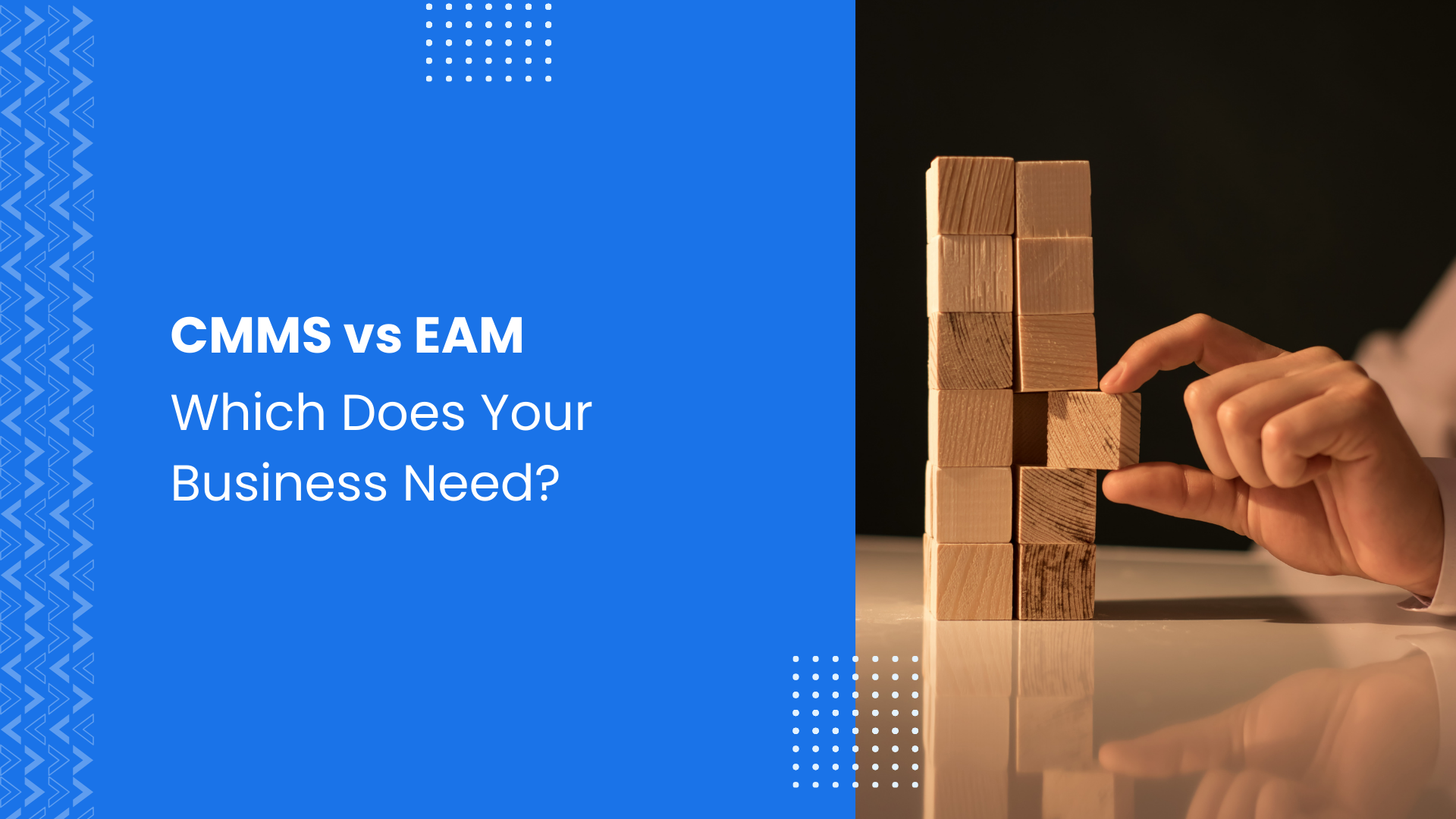Managing assets and day-to-day maintenance has become a major priority as buildings, factories, and facilities grow more complex. Teams need clear visibility into equipment health, repair history, and ongoing tasks to keep operations smooth. That’s why tools built for maintenance management have gained so much attention in recent years.
Two names that appear often are CMMS and EAM. They sound similar and even share a few functions, which leads many teams to mix them up. But each one serves a different purpose and supports a different stage in an organisation’s asset journey.
This blog breaks down what each system does, how they differ, and the kind of setup that suits your organisation best. You’ll get a simple overview of their strengths, the type of problems they solve, and how they help boost uptime, reduce repair expenses, and create a more predictable maintenance routine. By the end, you’ll be able to judge which solution fits your building or operations team, so you can invest in a tool that truly supports your long-term goals.
What is a CMMS and an EAM?
A CMMS, or Computerised Maintenance Management System, is a tool designed to help teams organise and track their maintenance activities. It keeps all repair details, work orders, schedules, and equipment history in one place. With a CMMS, technicians know what needs attention, managers can plan tasks with clarity, and organisations gain better control over unplanned breakdowns. It mainly focuses on daily maintenance tasks, quick access to asset information, and efficient scheduling. This makes it ideal for teams that want to improve reliability, cut downtime, and keep essential operations on track.
An EAM, or Enterprise Asset Management system, goes beyond maintenance tasks. It covers the entire journey of an asset purchase, installation, usage, upkeep, and disposal. Along with maintenance planning, an EAM usually handles procurement, contract details, budgeting, compliance records, audits, and performance analysis. It acts as a central hub for every detail linked to an asset across its lifetime. Larger organisations, or those with multiple facilities, often choose an EAM because it offers broader control and deeper visibility across departments.
In simple terms, a CMMS focuses on maintenance operations, while an EAM delivers a complete view of all assets in an organisation. Both systems support better decision-making and improved operational efficiency, but each serves different needs based on the scale and complexity of the setup.
CMMS vs EAM: Key Differences
A CMMS and an EAM may look similar at first glance, but the scope of each system sets them apart in a big way. A CMMS focuses on maintenance tasks. It supports work orders, preventive schedules, spare parts planning, and equipment history. Its purpose is to keep operations running smoothly each day by helping teams act quickly on repairs and plan maintenance with confidence.
An EAM covers a much wider range of activities. It manages an asset’s entire life cycle — purchase, setup, daily usage, service needs, audits, budget tracking, and end-of-life decisions. Along with maintenance tasks, it connects with procurement, finance, and compliance teams, giving leaders full visibility into cost, performance, and long-term planning.
One of the most noticeable distinctions is scale. A CMMS suits small and mid-sized teams that want strong control over maintenance. An EAM supports complex environments with larger asset portfolios, multiple locations, or strict regulatory needs. Another difference lies in integration depth. A CMMS usually handles maintenance data alone, while an EAM links that data to financial systems, contract tools, and broader organisational processes.
In short, a CMMS strengthens daily maintenance, while an EAM delivers strategic insight across the entire asset journey.
Which is the right choice?
Choosing between a CMMS and an EAM depends on the scale of your setup, the number of assets you manage, and the clarity you need across daily operations. A CMMS is usually the better pick for teams that want strong control over maintenance tasks without dealing with a heavy system. It supports quick planning, smooth scheduling, and reliable tracking, all while keeping the tool simple enough for technicians and managers to adopt with ease.
An EAM suits organisations that need deeper oversight across departments. If your asset base is large, located across multiple sites, or tied to strict compliance goals, an EAM gives you the structure to handle long-term planning, budgets, audits, and full life cycle insight. It acts as a unified hub that connects many teams, not just maintenance.
The right choice depends on your goals. A CMMS helps you strengthen maintenance workflows, cut downtime, and support daily tasks with clarity. An EAM enables strategic oversight, making it useful for organisations that want complete visibility into asset health, cost patterns, and long-range planning.
The key is to select a tool that aligns with your size, complexity, and future plans.
How to Decide What Your Business Needs?
Finding the right tool starts with understanding the scale and complexity of your operations. Begin by looking at the number of assets you manage, how often maintenance tasks occur, and the level of visibility your team needs each day. If your goal is to organise work orders, improve scheduling, and gain a clear view of asset history without dealing with a large system, a CMMS is usually the simpler and more practical option.
Think about how many departments rely on asset details. If your finance, procurement, compliance, and maintenance teams all need access to the same data, an EAM will serve you better. It offers a wider system that supports cross-team coordination and long-range planning. Budget and adoption also matter. A CMMS is lighter, quicker to set up, and easier for teams to learn. An EAM delivers deeper insight but demands more structure, more time, and a clearer plan for process alignment.
Lastly, consider your growth path. If your asset base, locations, or reporting needs will expand soon, choosing a tool that can scale with you will prevent disruptions later. A balanced review of asset volume, team size, process depth, and long-term goals will guide you to the right
Making the Right Choice
Choosing between a CMMS and an EAM comes down to the kind of control and visibility your organisation needs to keep assets running smoothly. Both systems aim to improve reliability and reduce unexpected issues, but each one serves a different level of operational depth.
A CMMS works best for teams that want a clear, organised approach to daily maintenance tasks. It keeps work orders, schedules, and asset history in one place, making it easier to plan ahead and react quickly when issues arise. Its simple setup and practical workflow make it a strong choice for small and mid-sized operations that need fast, dependable maintenance management.
An EAM suits organisations with larger or more complex setups. It supports long-range asset planning, budgeting, audits, multi-site coordination, and detailed performance tracking. This kind of system helps leaders understand the full impact of each asset across its entire life cycle, giving them the insight to manage cost, compliance, and long-term decisions with confidence.
In the end, the ideal choice depends on your team’s responsibilities, the volume of assets you manage, and the type of insight you want to achieve. A clear look at your current needs and future plans will guide you toward the system that offers the strongest support. If you’d like help comparing options, you can explore our guide on the top features to look out for in a CMMS to understand what a strong solution should include.



.png)

.png)
